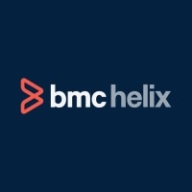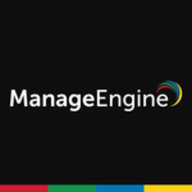


Find out what your peers are saying about JAMF, Microsoft, Cisco and others in Mobile Device Management (MDM).
| Product | Market Share (%) |
|---|---|
| BMC Helix Client Management | 4.6% |
| Jamf Pro | 21.6% |
| NinjaOne | 8.1% |
| Other | 65.69999999999999% |
| Product | Market Share (%) |
|---|---|
| ManageEngine Endpoint Central | 30.4% |
| Symantec Client Management Suite | 16.4% |
| Clarity CA | 9.7% |
| Other | 43.5% |
| Product | Market Share (%) |
|---|---|
| Microsoft Intune | 32.6% |
| Workspace ONE UEM | 13.7% |
| ManageEngine Endpoint Central | 10.7% |
| Other | 43.0% |



| Company Size | Count |
|---|---|
| Small Business | 7 |
| Company Size | Count |
|---|---|
| Small Business | 25 |
| Midsize Enterprise | 14 |
| Large Enterprise | 35 |
| Company Size | Count |
|---|---|
| Small Business | 116 |
| Midsize Enterprise | 46 |
| Large Enterprise | 152 |
BMC Helix Client Management offers robust systems management capabilities, focusing on patch management, software licensing, and remote administrative access, crucial for compliance and security.
BMC Helix Client Management enables efficient endpoint management across diverse systems with features like software deployment, inventory control, and compliance management. Offering stable performance, the SaaS version excels in supporting IT managers in regulatory compliance while managing thousands of endpoints. Users find the remote control feature exceptionally useful in remote work settings, facilitating updates and issue resolution seamlessly. There is a growing demand for enhancements such as Linux and Android support, improved integration, and mobile device management. Additionally, clients suggest the inclusion of vulnerability assessment, better agent reliability, application whitelisting, and refined remote command execution capabilities.
What are the key features of BMC Helix Client Management?
What benefits should users expect from BMC Helix Client Management?
In the tech-savvy industry, BMC Helix Client Management proves invaluable for IT managers tasked with software deployment and comprehensive endpoint oversight. Users in heavily regulated sectors leverage its capabilities for ensuring compliance and optimizing resource usage, ultimately driving management efficiency and reducing operational costs.
ManageEngine Endpoint Central is a unified endpoint management (UEM) solution offered by ManageEngine, a division of Zoho Corporation. It is designed to help organizations efficiently manage and secure their endpoints from a centralized platform. Endpoint Central provides a comprehensive set of features and capabilities to streamline endpoint management and enhance security across diverse devices and operating systems.
ManageEngine Endpoint Central Features:
ManageEngine Endpoint Central Benefits:
Reviews from Real Users
PeerSpot user, Sr Engineer Administrator at a university, says that "Its cross-platform capabilities and the ability to do both OS-level patching and third-party patching are valuable. It is difficult to find a software product that will do all that for you out of the box, and you don't have to do any configuration other than your initial setup. Once you do that, there is a very minimalistic approach to getting it operational. You can have it up and running within a 20-minute time span."
Park Armstrong, Chief Technical and Solution Architect at Vertigo Inc., writes that ManageEngine Endpoint Central is “Helpful for identifying and filling the gaps and meeting compliance needs, but each of their product works as an independent product and lacks integration”.
Microsoft Intune provides centralized management of mobile devices and applications, ensuring security, compliance, and productivity through integration with Microsoft services like Microsoft 365 and Azure Active Directory.
Organizations use Intune for managing mobile devices and applications, enhancing security and compliance across platforms. With features like single sign-on, conditional access, and zero-touch deployment via Autopilot, it facilitates efficient operations. Intune's scalability, easy enrollment, and capabilities such as remote wipe support diverse device management, offering robust data protection and efficient operation. Despite its features, improvement areas include reporting, compatibility with non-Microsoft devices, and better support for macOS and Linux devices.
What are the key features of Microsoft Intune?
What benefits should users look for in reviews?
In industries such as finance, healthcare, and education, Microsoft Intune is implemented to ensure secure and compliant device management. Companies leverage its capabilities to deploy security policies and manage both corporate-owned and BYOD environments, facilitating a unified approach to data protection and compliance.